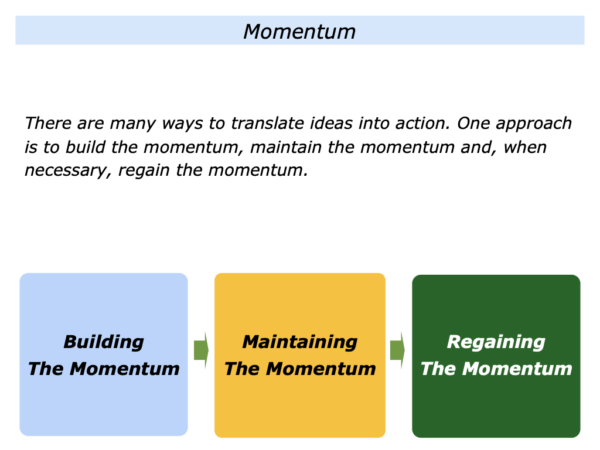
There are many ways to translate ideas into action. One approach is focus on what some people call the Big Mo. It is to build momentum, maintain momentum and, when necessary, regain momentum.
Different people follow this approach in different ways. Some follow certain principles that increase the chances of achieving success. Let’s explore how this can be translated into action.
Building The Momentum
Some people are good at building momentum. They may aim to do this when developing a healthy lifestyle, doing a creative project, shifting an organisational culture or doing another activity.
Such people set things up to succeed. They start by clarifying the real results they want to achieve. They also clarify the benefits of achieving this picture of success.
They then plan ahead. Bearing in mind what they can control, they aim: a) to build on their personal or professional strengths; b) to follow principles that work; c) to do their best to get positive results.
They keep following their daily disciplines, do what works and get some early wins. Success breeds self-confidence and can lead to other successes.
Some people follow this approach in their personal lives by making a positive start to the day. They may wake up, focus on their goals and do something to encourage themselves or other people. They then feel more in charge of the day.
Good leaders follow a similar approach when aiming to shift a culture in an organisation. Such leaders sometimes take the following steps with their people:
They communicate the organisation’s purpose, principles and picture of success;
They build on the positive people who want to follow the principles and enable them to produce some quick successes;
They communicate the successes stories that show how people have followed the principles and worked towards the picture of success.
Good leaders recognise that people buy success rather than the theory of success. They therefore build on the people who follow the principles and want to contribute to helping the organisation to achieve success.
Imagine that a person, team or organisation has built momentum. They may then move on to the next stage.
Maintaining The Momentum
The Big Mo is a term that is used in daily life, sports, business and other fields. It refers to how people can follow good habits and build momentum. This can carry them on a wave to achieving the desired results.
People who take this approach keep following the principles that will increase the chances of success. They maintain momentum rather than fall into the trap of declaring victory too early. Let’s look at some examples.
The Principles Approach
– One Day At A Time
This is an approach followed by people ranging from recovering addicts to peak performers. The keys are for the person:
To make the internal decision they want to follow certain principles – such as good habits – and get the benefits of achieving certain positive goals;
To keep following these principles one day at a time on the way towards achieving the positive goals;
To get successes and then plan how they want to follow the principles the next day towards achieving the positive goals.
People who take this approach keep focusing on the benefits. They do this to keep encouraging themselves on the journey towards achieving the positive goals.
The Principles Approach – Focusing
On Continuous Improvement
Great workers, teams and organisations sometimes follow this approach to maintain the momentum. Some leaders also encourage their people to build on what they are doing well and also tackle areas for improvement. Such leaders may take the follow steps:
They keep producing success stories that show how people are following the principles and doing superb work:
They keep encouraging people to follow these principles plus also tackle areas for improvement;
They keep encouraging people to produce more success stories that show what good looks like when they translate the principles into action.
There are many ways to produce such success stories. Here is one framework that some people use to maintain the momentum.
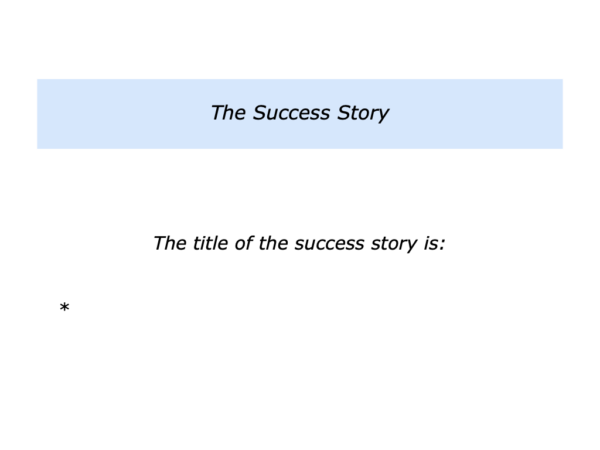
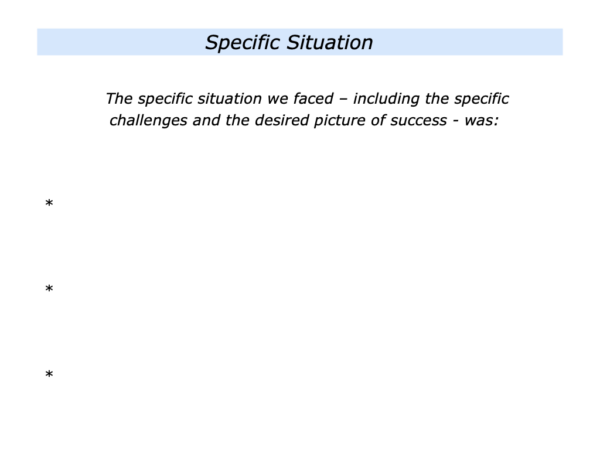
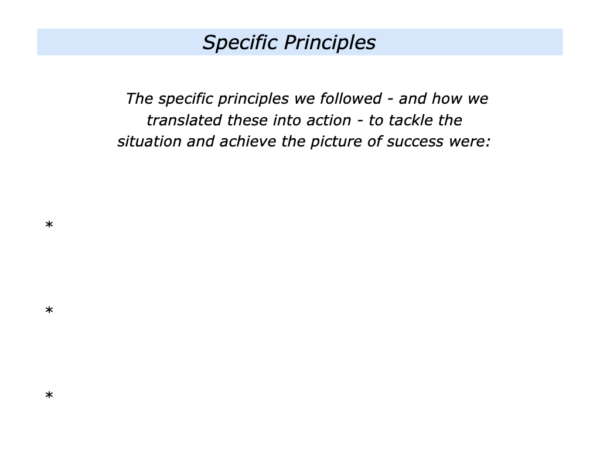
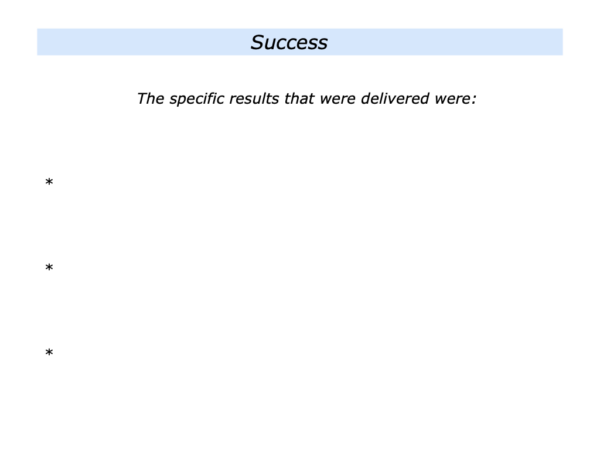
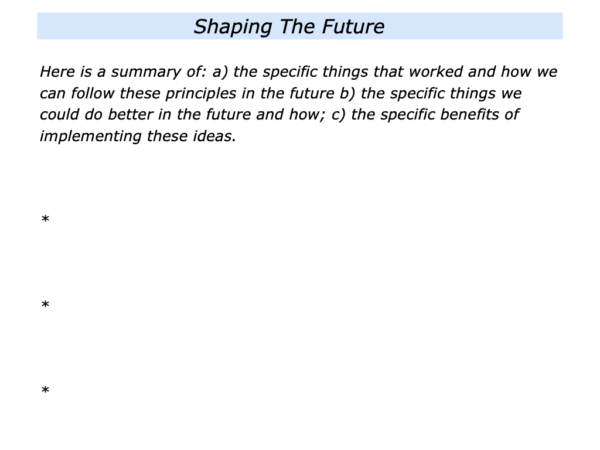
Such leaders also keep people informed about the progress that is being made towards the picture of success. They tell people about the following things:
The specific things that have been achieved so far by following the principles on the way towards achieving the goals;
The specific future plans and how people can keep following the principles when working towards achieving the goals;
The specific future challenges and how people can follow the principles to tackle these successfully when working towards achieving the goals.
Great workers aim to keep following good habits. There may come a time, however, when they need to focus on to the next theme.
Regaining The Momentum
People can sometimes by knocked off-course. A person may experience a setback, a football team may concede an early goal, an organisation may be hit by market conditions.
Different people react in different ways when losing momentum. Some panic, some look for others to blame, some make hasty decisions that can result in collateral damage.
Great workers buy time in such situations. Staying calm, they act to stop any haemorrhaging. Looking ahead, they again clarify the real results to achieve – the picture of success. They then take the following steps:
They clarify the principles they can follow in the situation to increase the chances of achieving the picture of success;
They rehearse how they can follow the appropriate principles and do their best to achieve the picture of success;
They translate these principles into action, get a quick success and aim to regain their momentum on the way towards achieving the picture of success.
Different people follow this approach in different ways. Stefan Edberg, the former Wimbledon Tennis Champion, said that he saw setbacks as an opportunity. Here is a summary of what he said.
“I sometimes actually welcome setbacks in a match because I know that my opponent will also have setbacks at some point. Being a resilient person, this gives me the chance to show that I can overcome setbacks better than other people.”
Great teams go back to basics to regain their rhythm. Some organisations, for example, reverted back to their core business after Covid. They took the following steps to focus on regaining the Big Mo.
They aimed: a) to do what they did best; b) to focus on the customers with whom they worked best; c) to enable their people to do their best and deliver success.
Let’s return to your own life and work. Looking ahead, can you think of a situation where you may want to follow elements of the momentum approach? How can you follow this in your own way?
If you wish, try tackling the exercise on this theme. This invites you to complete the following sentences.
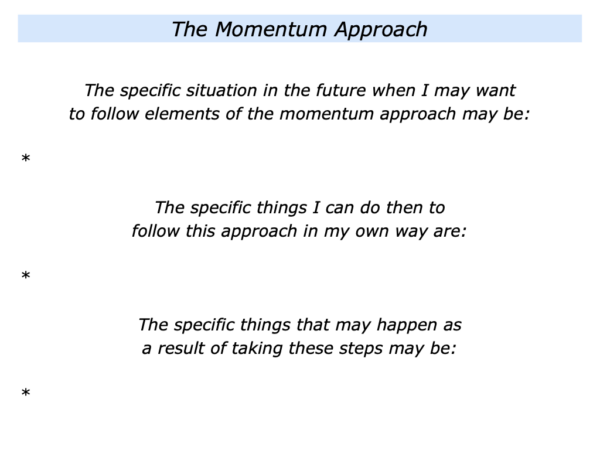






Leave a Reply